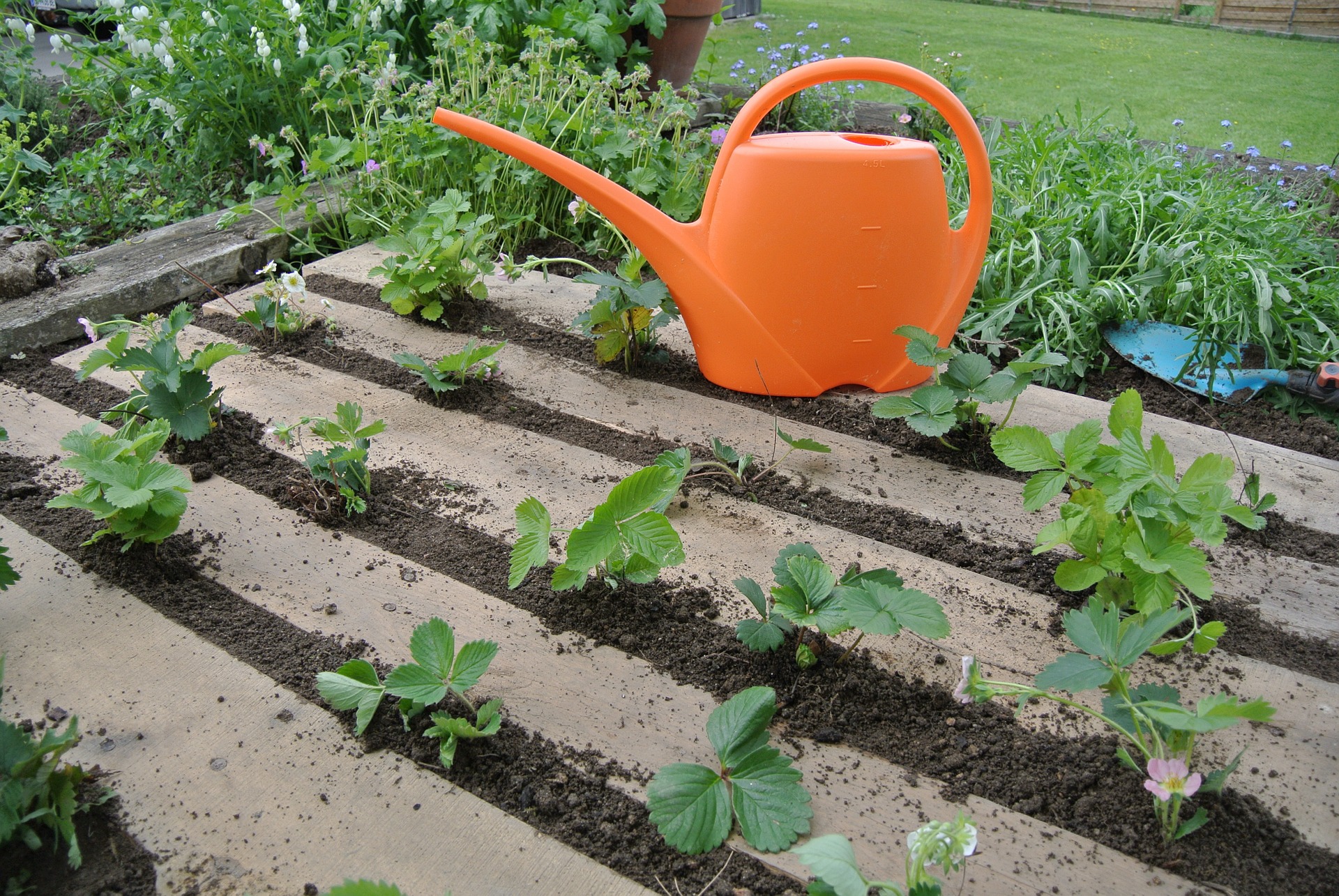A strawberry patch can be pretty low maintenance if it is periodically kept weeded and mulched. But if left untended, your strawberry patch can become overgrown and unproductive. Luckily it’s possible to get it back under control and producing a bumper crop of strawberries each year. Listed below are the steps you can take this fall to reclaim an unproductive strawberry bed:
1. Start by taking the strawberry runners that have not yet rooted and allow them to root onto small flower pots filled with a good potting soil fortified with compost and biochar (aka horticultural charcoal ). Follow this link to learn how to make biochar.
2. Once the plants are rooted, cut the vine to the mother plant. Plastic cups or small clay pots work fine.
3. Move these daughter plants to a nursery area until the garden is prepped. Water them with dilute water soluble fertilizer to encourage deep rooting.
4. To prep the garden, pull out all the vegetation in the strawberry bed, don’t be too picky.
5. Let it rest for a week or two, any weeds you missed will show.
6. Before the frost, shovel out the garden soil onto a tarp or durable plastic sheet to a depth of 8 to 12″. If you have rocks like I do ( Brimfield-Brookfield soil ) I screen it through a 1/2″ hardware cloth.
7. Test your soil to see if you need specific amendments.
8. Add to that screened soil, 10 gal. compost, and 5 to 10 gallons of “charged ” horticultural charcoal less than 1/2 inch diameter. Urban gardeners have used lump hardwood charcoal that is used for BBQ’s. These gardeners then wet the charcoal with water and a few drops of baby shampoo or a biodegradable dish detergent before crushing it. They charge it up with a water soluble fertilizer. If the charcoal is too alkaline ( pH> 8.5) then it can be adjusted with a little vinegar.
9. Any additional supplements to be added will be based on soil analysis report.
10. Mix well and fill the excavated area.
11. With a rake, mound the soil to create rows that are about 12 inches wide and 6 inches high and that are oriented in a north south pattern to maximize sunlight.
12. The valleys between the rows can be excavated down to provide soil for the mound, and used as a means of draining or irrigating the garden plot efficiently.
13. Fill the valleys with wood chips and top the rows with about 2 ” of woods chips.
14. Arrange the daughter plants in the final pattern on the rows about 6 to 8″ apart and transplant before the frost.
15. Allow the new plants to freeze before covering them with straw for the winter.
16. When the ground defrosts uncover the plants to expose them to the sun. Leave the straw as a mulch to keep the berries clean and prevent weeds.
Ted Wysocki is a Chairperson at Pioneer Valley Biochar Initiative
To find locally grown food, plants, and more in your area, visit Pick-A-Pepper.com today!
Similar Stories:
- Soil Blocks for Seed Starting
- Growing Peas
- Five Myths About Food Safety and Home Gardens
- Propagating Hardwood Cuttings in Vermiculite
- ADAPTING YOUR POND TO CLIMATE CHANGE




